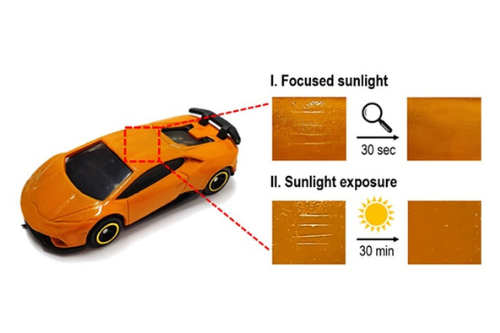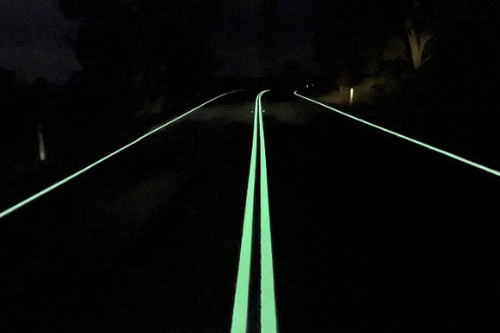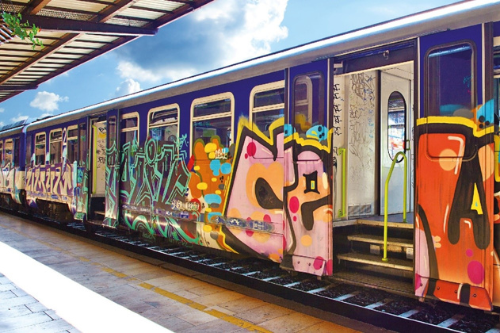In the last decade, the industrial coating sector has witnessed a major development of paint products geared towards sustainability and increased demand for ever-higher performance as well as more attractive, quality finishes. These high-value, high-tech paints are called “smart coatings”.
Introducing smart coatings
During the Smart Coatings III conference held in February 2011, Jamil Baghdachi, a professor with over thirty years of experience in the painting industry at the Eastern Michigan University’s School of Engineers, explained that “materials that are able to dynamically adapt their properties to external stimuli can be called reactive or intelligent”. The phrase “smart coatings” therefore refers to all those functional, or indeed intelligent paints that are able to respond to environmental stimuli or other strains from their outside.
Smart coatings are made with advanced materials and boast a range of physical, chemical, electrical, and mechanical properties that enable them to respond to changes in light, temperature, etc.
Smart coatings are designed to remain passive until their surfaces are stimulated by an external agent that causes their properties to be activated.
Finally, smart coatings combine advanced functionality with design, thus offering not only protection and performance benefits, but also aesthetically appealing finishes. This is why they are used in numerous industries, including automotive, shipbuilding, and architecture.
Types of smart coatings
Self-healing paint
Coatings with self-healing properties have the ability to repair any surface damage and recover their functional performance without any external intervention. Such properties are often provided by self-healing polymers (SHPs) or corrosion inhibitors that are added to the paint’s formulation.
External stimuli, including temperature or light, can trigger the chemical and physical reactions necessary to activate these self-repairing agents.
Based on this functioning principle, a team of scientists and researchers from the Korea Research Institute of Chemical Technology
recently discovered a self-healing coating that can remove scratches on cars in just thirty minutes.
 © Korea Research Institute of Chemical Technology
© Korea Research Institute of Chemical TechnologySelf-cooling paint
Self-cooling coatings are developed with the aim of reflecting almost all sunlight and, as a result, cooling homes, offices, cars, or planes without the use of air conditioning, thus also helping to limit global warming.
In 2020, engineers at Purdue University developed a white paint based on calcium carbonate that can keep surfaces up to 18 °F (-10 °C) cooler than their surroundings without consuming energy. This product is not only capable of reflecting heat far away from surfaces, but also from the Earth into deep space, where heat travels indefinitely at the speed of light. This prevents heat from being trapped in the atmosphere and does not contribute to global warming.
Generally, paints on the market are only able to reflect 80% to 90% of sunlight and cannot reach lower temperatures than those of the surrounding environment. However, the white paint created by the Purdue University researchers reflects 95.5% sunlight and efficiently disperses infrared heat.
Photoluminescent paint
These paints have a special photoluminescent effect that makes them suitable for application on all surfaces that need to be bright and visible even in low light or darkness. Photoluminescent coatings contain special pigments that absorb and store light during the day and then re-emit it at night for an extended period of time.
This type of paints is mainly used to coat bicycles, car, and motorbike components, but also traffic and emergency signs.

Anti-microbial paint
These coatings are resistant to microorganisms and limit their proliferation. 99.99% of the bacteria that come into contact with surfaces treated with these specific paints are unable to grow and are destroyed.
As they limit the presence of microbes, germs, and bacteria, these paints are mainly used in places (e.g. hospitals and other highly frequented areas) and on surfaces (e.g. street furniture, door handles, and lift buttons) calling for a high level of hygiene.
Photocatalytic paint
Photocatalytic paint is developed to clean the air of pollutants. Also called “smog-eating paint”, it exploits the photocatalytic process of the nanoparticles of titanium dioxide (a solar UV-sensitive catalyst) it contains to act on nitrogen oxides, the key players in the chemical reactions that produce ozone in the atmosphere. The photoinitiators in these coatings trigger a series of photochemical reactions that break down pollutants in the air. Photocatalytic paints can also have self-cleaning properties.
Insect repellent paint
Mosquitoes, flies, and ticks often pose a health hazard to humans because they are significant vectors of infectious diseases. Therefore, different paints with an insect repellent effect have been developed in recent years. Through the controlled release of repellent substances (which at the same time are not harmful to humans), these coatings drive insects away by preventing them from walking or standing on the protected surfaces, thus reducing the risk of disease transmission.
Anti-graffiti paint
Graffiti vandalism is now a widespread phenomenon in many cities. There are still few means to combat it, but one of them is offered by the paint industry: coatings with anti-graffiti properties.
They are special coatings designed to protect public buildings and street furniture against graffiti, making it easier to clean their surfaces without having to repaint them. Anti-graffiti coatings are normally available in a wide range of colours and finishes, including transparent and metallic ones. Both liquid and powder products are available. They can be divided into two main types:
- Sacrificial anti-graffiti coatings, called this way because they are applied and then “sacrificed”, i.e. removed together with the graffiti.
- Permanent anti-graffiti coatings, which do not degrade when graffiti is removed.
 © Adapta Color
© Adapta ColorThe paint and coatings industry, as well as materials science and engineering, are constantly innovating and searching for new substrates, pigments, and finishes to optimise the aesthetic and functional performance degree of products.
Over the years, ipcm_International Paint&Coating Magazine has published numerous articles on smart liquid and powder coatings, illustrating their characteristics, effects, and fields of application. You can stay up-to-date with the latest news by subscribing here!